It could be a cool name for a band, but “Florence and the dunes” just names more of the places we thoroughly enjoyed on the Oregon coast. Yes… I’m still blathering about the O.C. I have one more post after this one to get you all caught up before I start in on the perpetually adorable way that our town celebrates the Christmas holidays. Brace yourselves.
Right near our Florence-area campground we found the tiny Darlingtonia State Park, home to the protected cobra lily properly known as Darlingtonia californica – a carnivorous member of the pitcher plant family.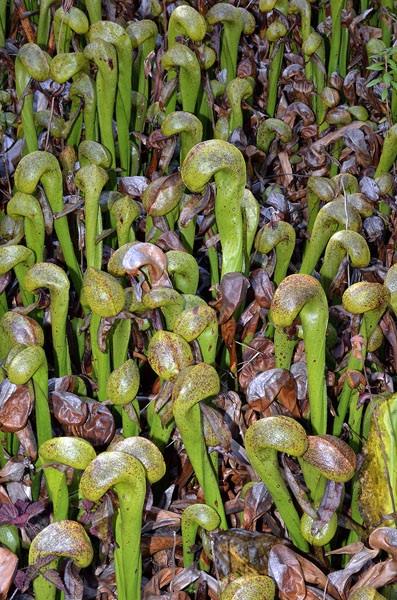 This time of the year they’re looking pretty sad and brown, but they’re still very interesting to see. Springtime is when they’re the most beautiful.
This time of the year they’re looking pretty sad and brown, but they’re still very interesting to see. Springtime is when they’re the most beautiful.
Florence was a nice little town, and we spent a misty rainy afternoon exploring the shops along the waterfront.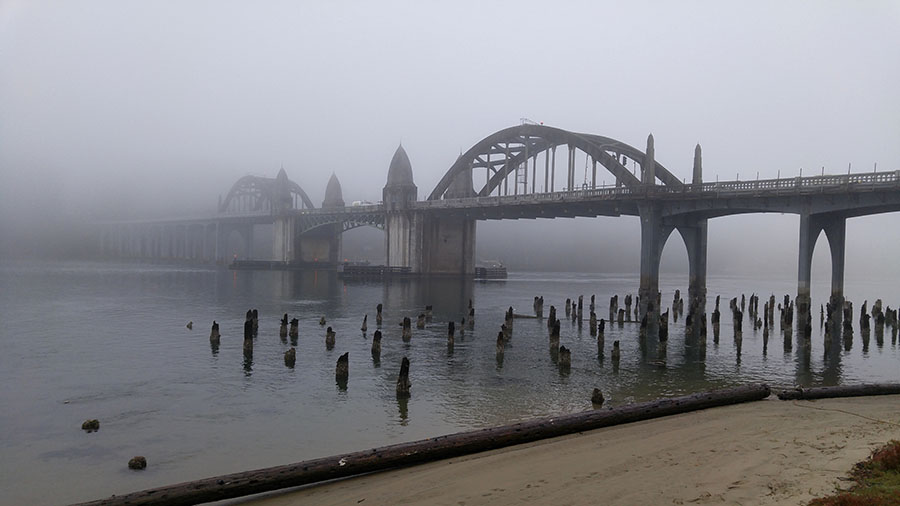
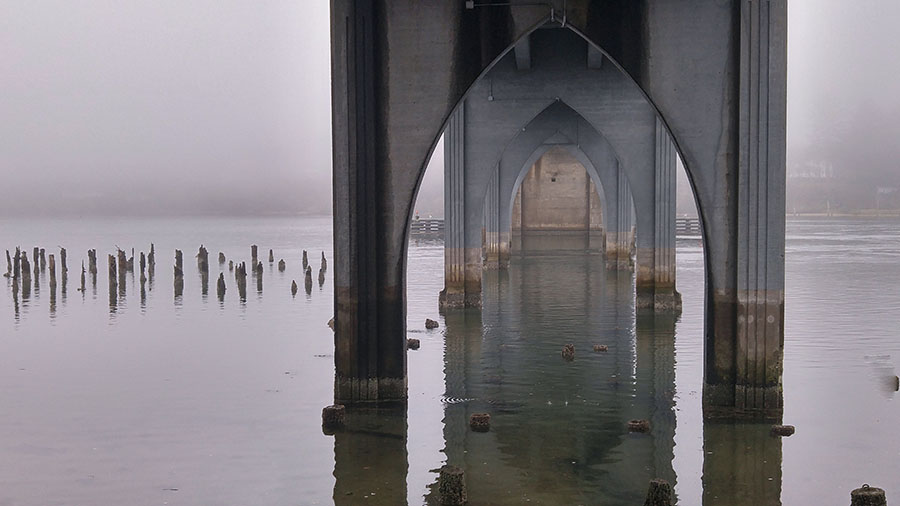 Nothing like a little “retail therapy” in a fancy kitchen store followed by a dish of ice cream to satisfy body and soul. We found a cozy restaurant for dinner later that evening, but first we had to work off some calories with a hike on the Hobbit Trail.
Nothing like a little “retail therapy” in a fancy kitchen store followed by a dish of ice cream to satisfy body and soul. We found a cozy restaurant for dinner later that evening, but first we had to work off some calories with a hike on the Hobbit Trail.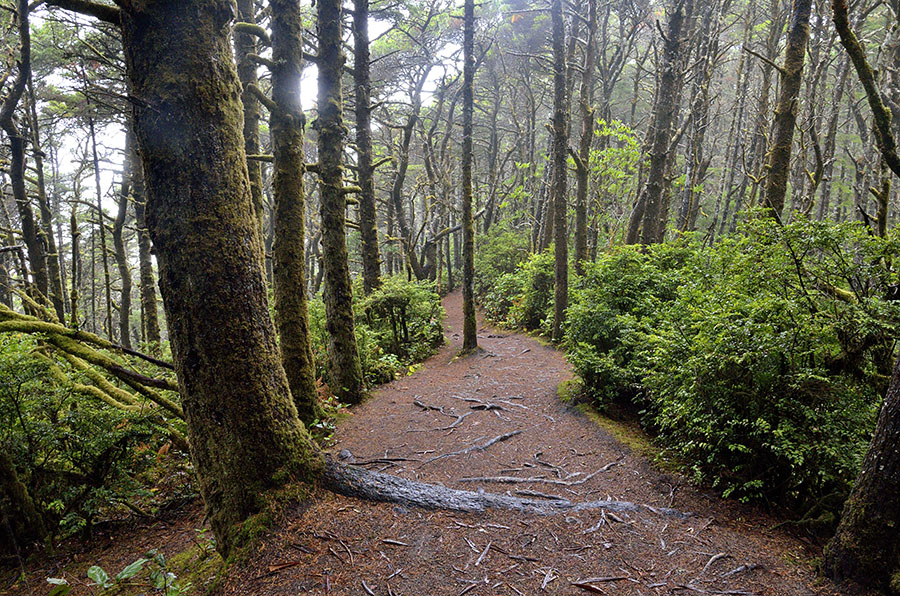 The drizzly, moody weather made the Hobbit Trail feel even more “hobbity,” and we kept a sharp eye out for short creatures with furry feet. Alas, we didn’t spot any creatures, but we did end up on a beach that we had all to ourselves.
The drizzly, moody weather made the Hobbit Trail feel even more “hobbity,” and we kept a sharp eye out for short creatures with furry feet. Alas, we didn’t spot any creatures, but we did end up on a beach that we had all to ourselves.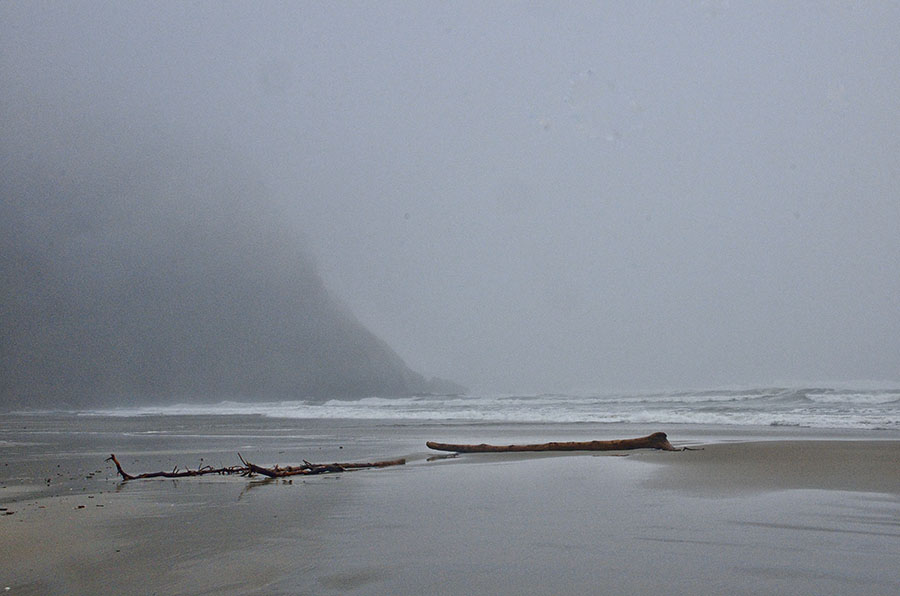 We walked along the eroding cliff face, keeping one eye on the surf that occasionally threatened to wet our boots despite the ebbing tide. It was sublime – just us, the breaking surf and the swirling mist.
We walked along the eroding cliff face, keeping one eye on the surf that occasionally threatened to wet our boots despite the ebbing tide. It was sublime – just us, the breaking surf and the swirling mist.
Florence also marks the northern end of the Oregon Dunes, a 31,500 acre national recreation area that extends along almost 40 miles of Oregon’s coastline. The dunes are formed by wind and rain erosion of the nearby mountains, with some as tall as 500′. These are the largest coastal sand dunes in North America, and you can enjoy them on foot or with some type of Off Highway Vehicle (OHV). 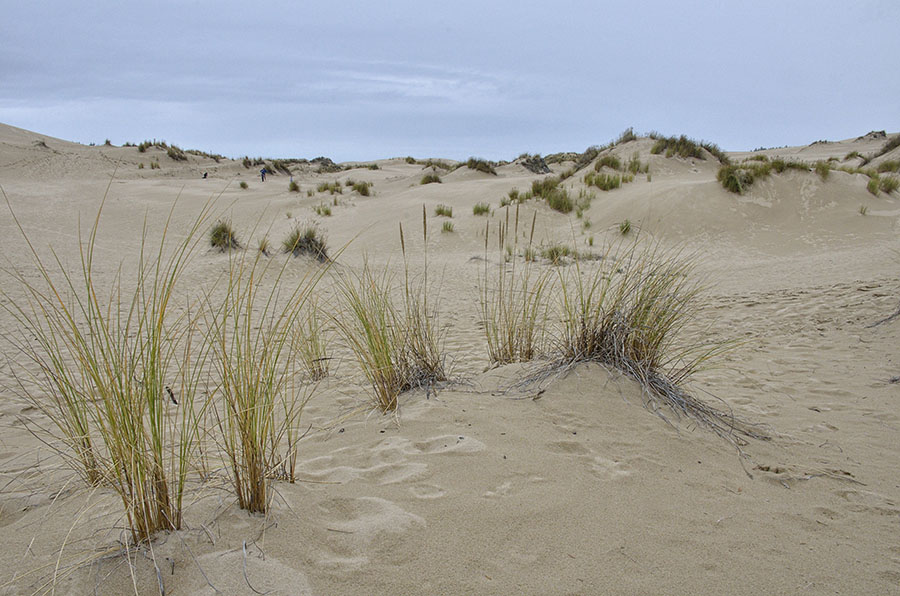
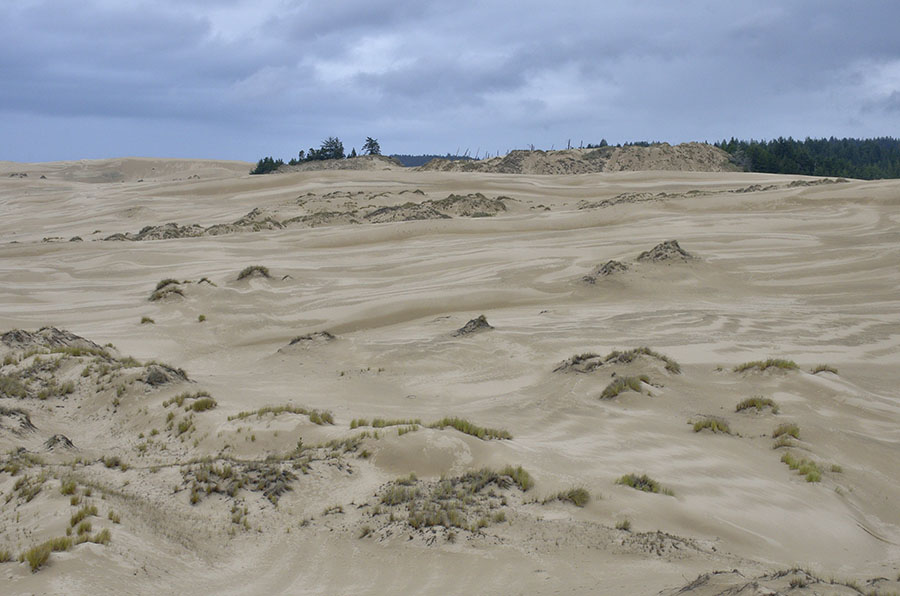 We didn’t have as much time as we would have liked to explore the dunes, but what little we did left us craving more. I read about the John Dellenback Trail that has some of the tallest dunes, so we focused on that area for a big exploration. What’s fascinating is the abrupt change from forest to dune.
We didn’t have as much time as we would have liked to explore the dunes, but what little we did left us craving more. I read about the John Dellenback Trail that has some of the tallest dunes, so we focused on that area for a big exploration. What’s fascinating is the abrupt change from forest to dune.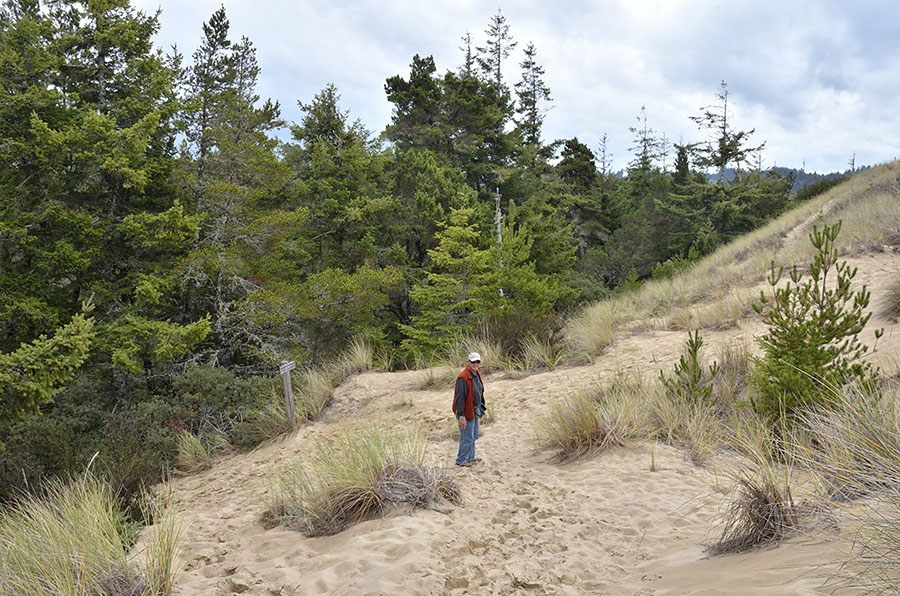
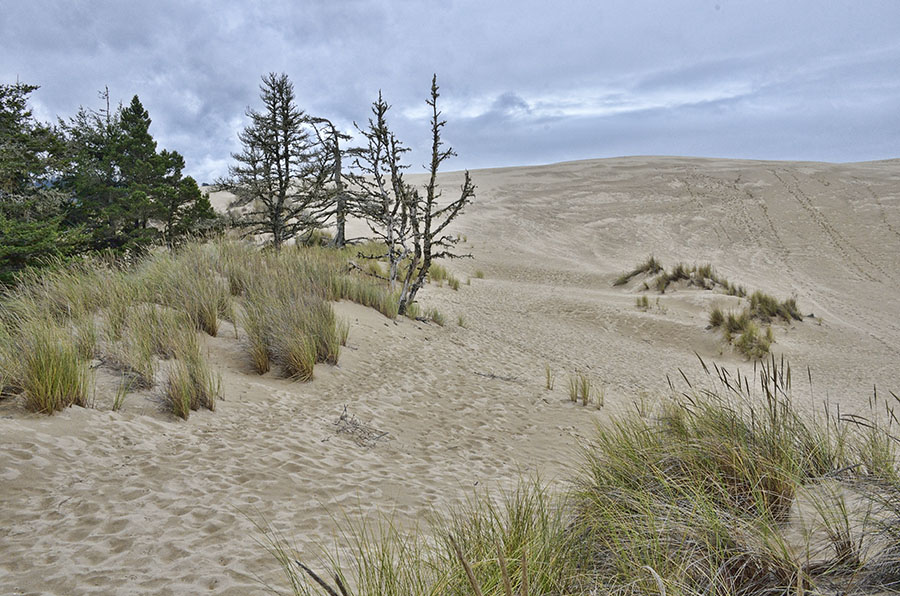 There is no way for photographs to convey the scale of this place.
There is no way for photographs to convey the scale of this place. 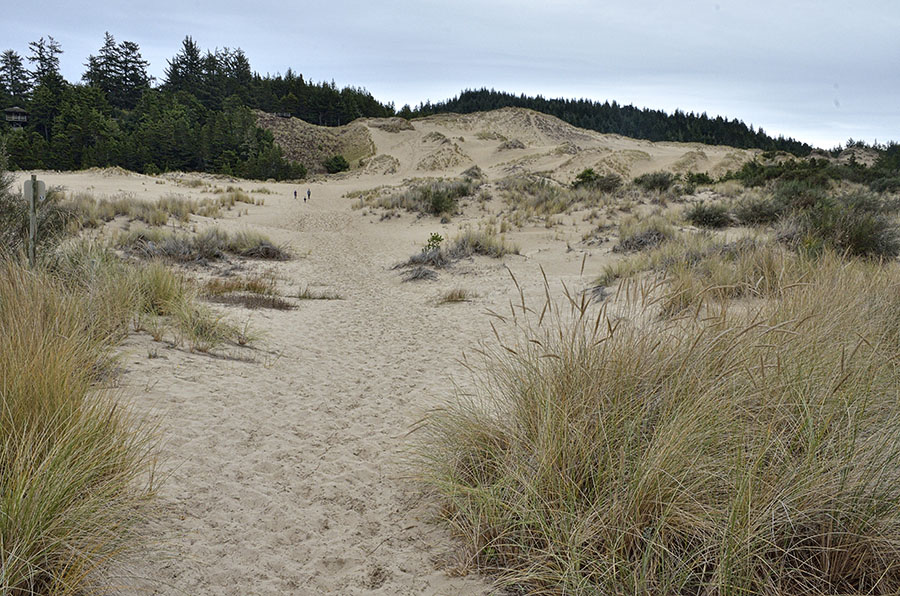 Can you spot the three people in the photo above? They’re just tiny specks – I would not want to get lost here. Although hiking in the soft sand was pretty tiring, we could not come all that way and miss climbing to the summit of the big dune. The effort was worthwhile, giving us a panoramic view of forested mountains to the east and the ocean to the west. The wind made patterns in the sand, and blew a fine mist off the crest.
Can you spot the three people in the photo above? They’re just tiny specks – I would not want to get lost here. Although hiking in the soft sand was pretty tiring, we could not come all that way and miss climbing to the summit of the big dune. The effort was worthwhile, giving us a panoramic view of forested mountains to the east and the ocean to the west. The wind made patterns in the sand, and blew a fine mist off the crest.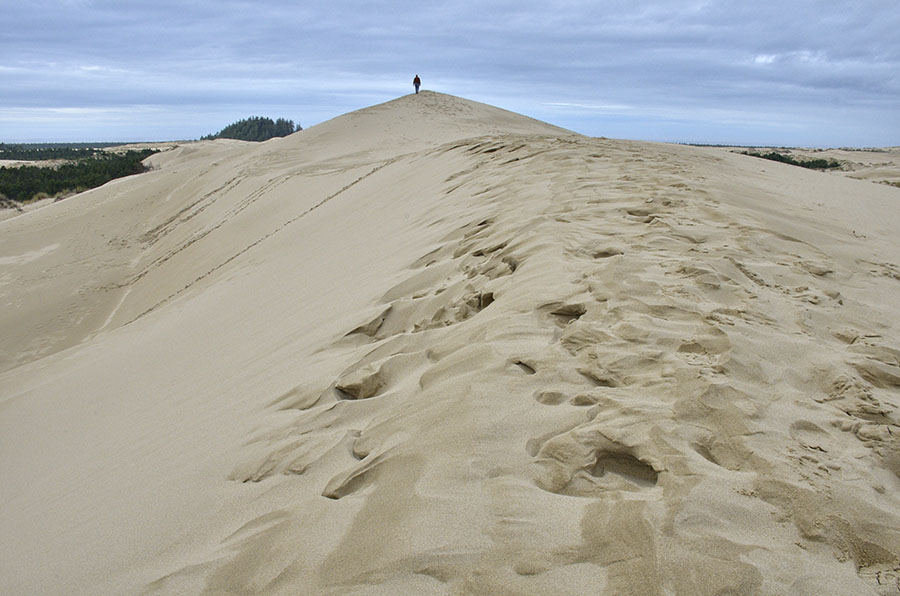 We didn’t see too many other people, making our exploration feel wonderfully solitary and remote. We did encounter a couple taking their two dogs and a goat on the trail. Yes, a goat. Apparently the goat thinks he’s a dog, and can’t stand to be left behind. Why not?
We didn’t see too many other people, making our exploration feel wonderfully solitary and remote. We did encounter a couple taking their two dogs and a goat on the trail. Yes, a goat. Apparently the goat thinks he’s a dog, and can’t stand to be left behind. Why not?
We enjoyed a little picnic lunch after our hike, and savored the view of this marvelous and unique area.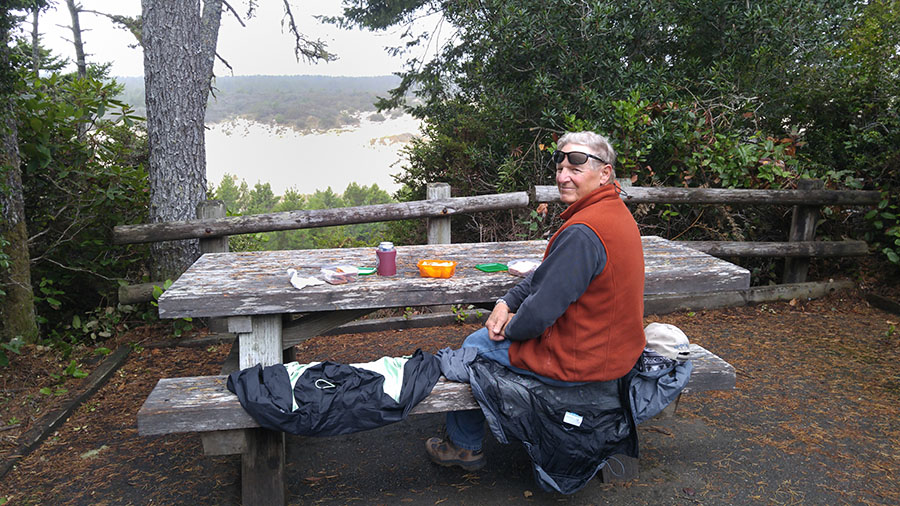
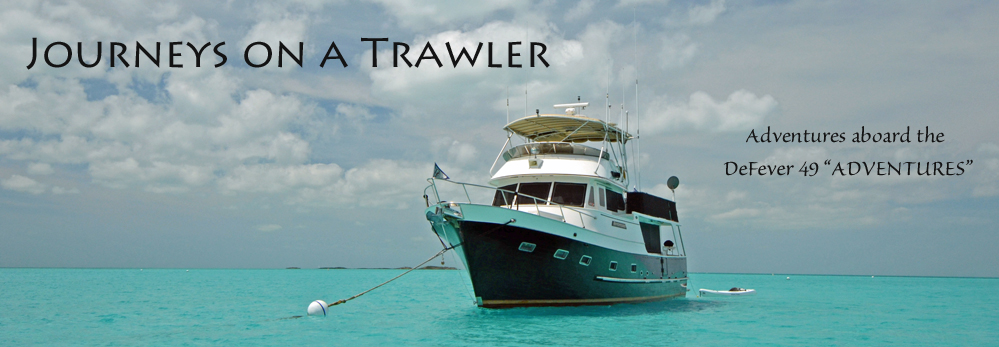
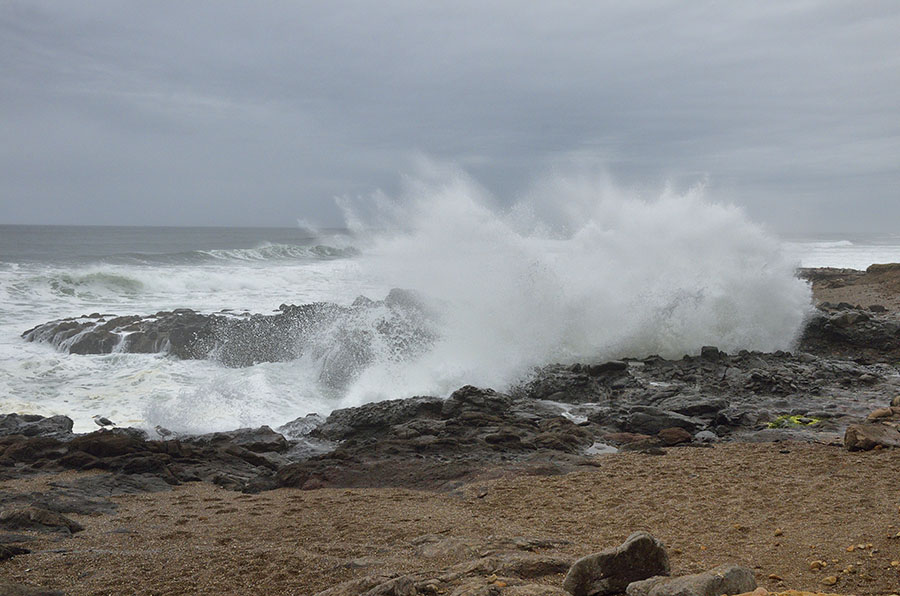 The waves crashing on the rocks were mesmerizing, and we were sometimes startled out of our reverie by the WHUMP of a big wave that you could feel in your chest. Sea birds were fishing in the surf, ducking under the biggest waves, and riding up and over the smaller ones. It took me a while to identify them correctly, and they were (no surprise) Surf Scoters. How these birds could successfully feed in those violent waves boggles the mind, but they kept at it for quite a long time.
The waves crashing on the rocks were mesmerizing, and we were sometimes startled out of our reverie by the WHUMP of a big wave that you could feel in your chest. Sea birds were fishing in the surf, ducking under the biggest waves, and riding up and over the smaller ones. It took me a while to identify them correctly, and they were (no surprise) Surf Scoters. How these birds could successfully feed in those violent waves boggles the mind, but they kept at it for quite a long time.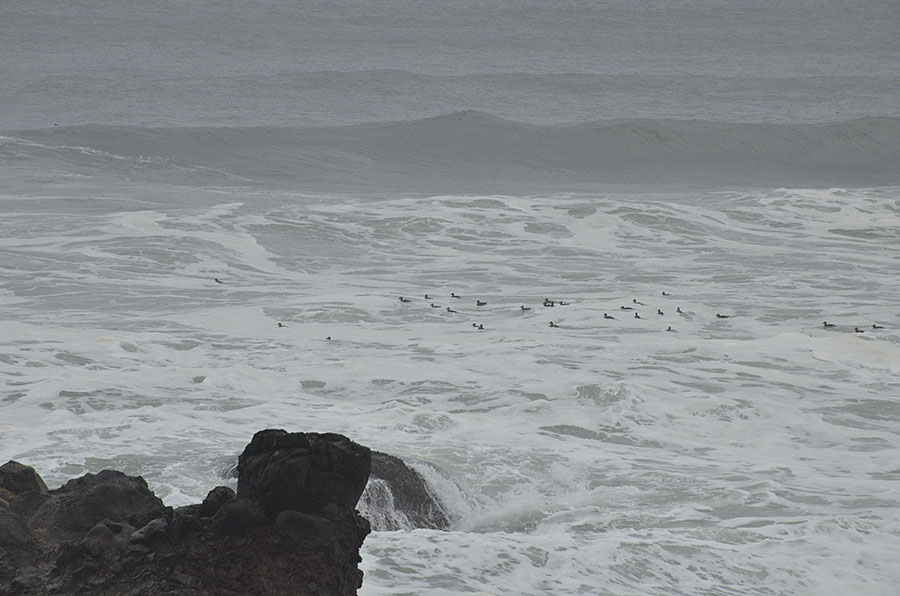 As with the rest of the coast, state parks and state recreation areas are everywhere – each a little gem with great views or a special natural feature. On top of that the town of Yachats was charming and fun…
As with the rest of the coast, state parks and state recreation areas are everywhere – each a little gem with great views or a special natural feature. On top of that the town of Yachats was charming and fun… Just a few miles down the road is Cape Perpetua State Park, with a number of hiking trails, an interpretive center, and some awesome shoreline features. While waiting for the tide to rise we hiked to see the giant spruce tree – over 600 years old, standing 185′ tall and 40′ in circumference.
Just a few miles down the road is Cape Perpetua State Park, with a number of hiking trails, an interpretive center, and some awesome shoreline features. While waiting for the tide to rise we hiked to see the giant spruce tree – over 600 years old, standing 185′ tall and 40′ in circumference.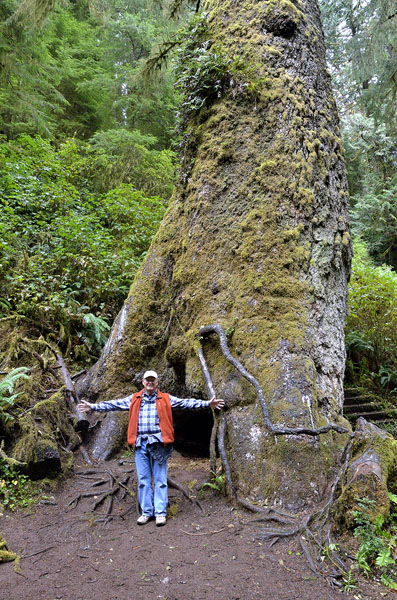 The hollow under the tree was created by a “nurse log” – a dead rotting log that provided a rich medium for a little spruce seedling to grow on, and eventually the nurse log returned to the soil as this tree became the mighty specimen that it is today.
The hollow under the tree was created by a “nurse log” – a dead rotting log that provided a rich medium for a little spruce seedling to grow on, and eventually the nurse log returned to the soil as this tree became the mighty specimen that it is today.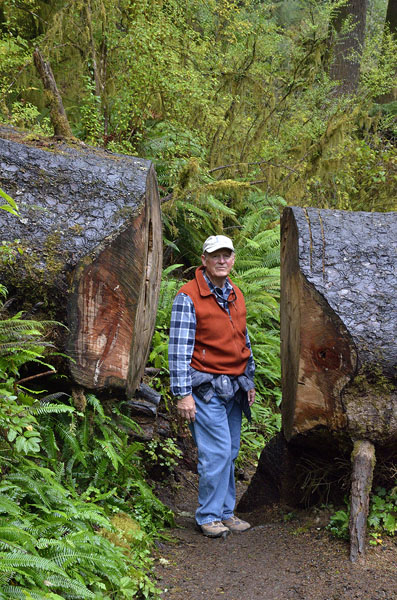 We drove up to a fantastic overlook, but the lashing rain and gusty wind made it impossible to take a photograph – we were more concerned about not getting blown off the cliff! But as the rain eased and the tide came in, we climbed down by the craggy shoreline to see the Devil’s Churn and Spouting Horn.
We drove up to a fantastic overlook, but the lashing rain and gusty wind made it impossible to take a photograph – we were more concerned about not getting blown off the cliff! But as the rain eased and the tide came in, we climbed down by the craggy shoreline to see the Devil’s Churn and Spouting Horn.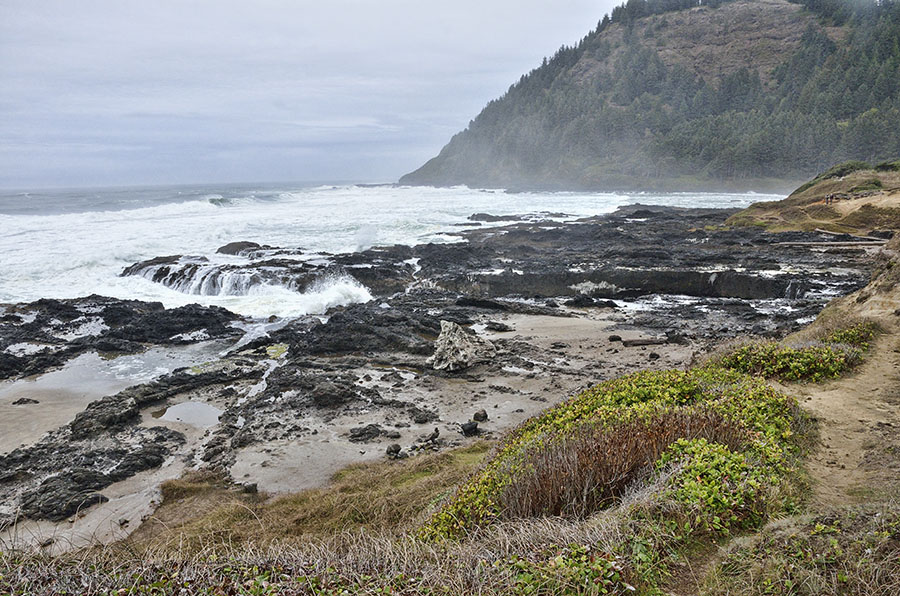 The Churn is a long narrow rectangular cut in the shoreline where the sea foams and flings itself furiously at the rocks. There were some smaller similar formations all along that stretch, but my favorite was the Spouting Horn.
The Churn is a long narrow rectangular cut in the shoreline where the sea foams and flings itself furiously at the rocks. There were some smaller similar formations all along that stretch, but my favorite was the Spouting Horn. 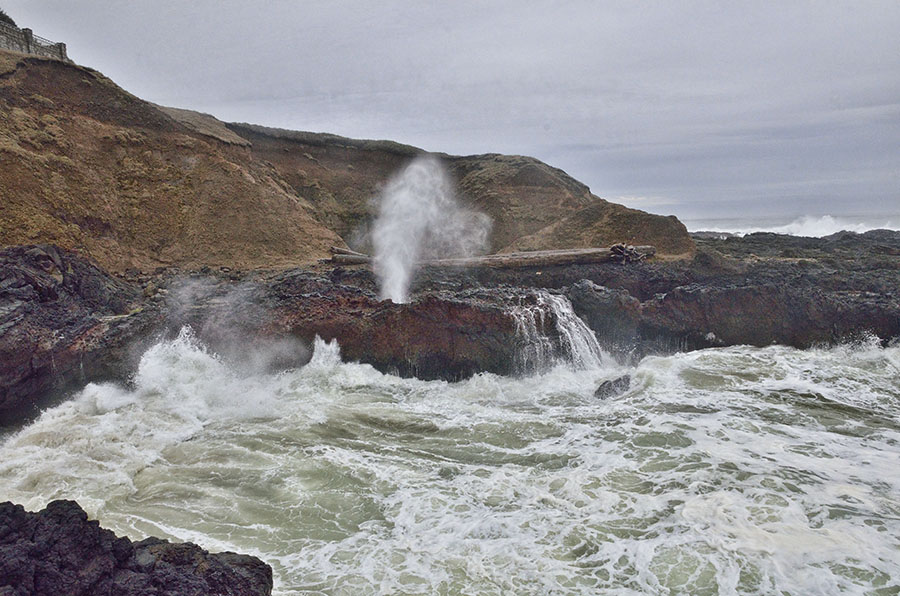 We watched the sea funnel into a narrow cut and when the waves were just right they were forced under the rocks and emerged as a violent spout of mist from a small hole. Once again, it was mesmerizing.
We watched the sea funnel into a narrow cut and when the waves were just right they were forced under the rocks and emerged as a violent spout of mist from a small hole. Once again, it was mesmerizing.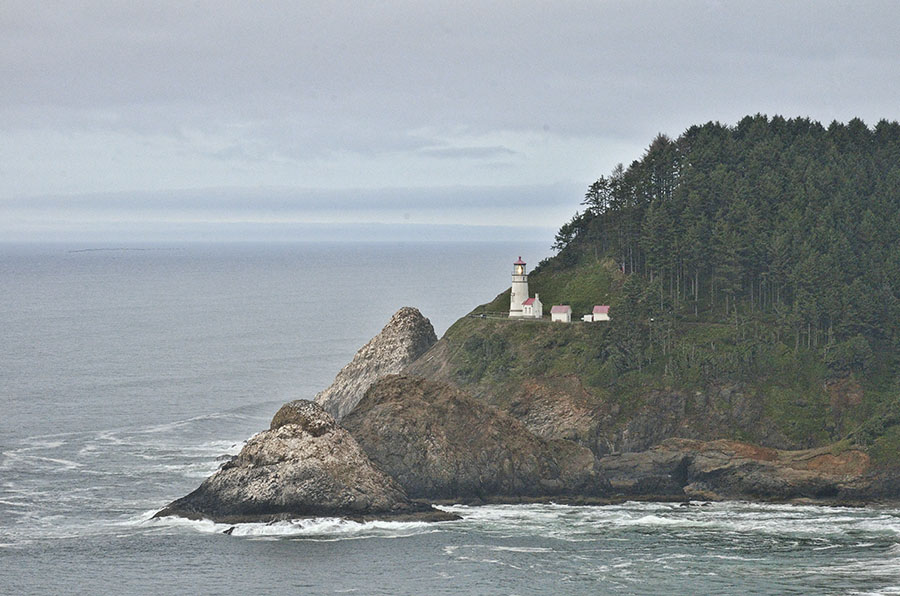 Horizontal rain started back up so there were very few visitors, but the dauntless volunteers were dressed in full rain gear and were happy to show us the tiny museum and explain the highlights about this particular lighthouse.
Horizontal rain started back up so there were very few visitors, but the dauntless volunteers were dressed in full rain gear and were happy to show us the tiny museum and explain the highlights about this particular lighthouse.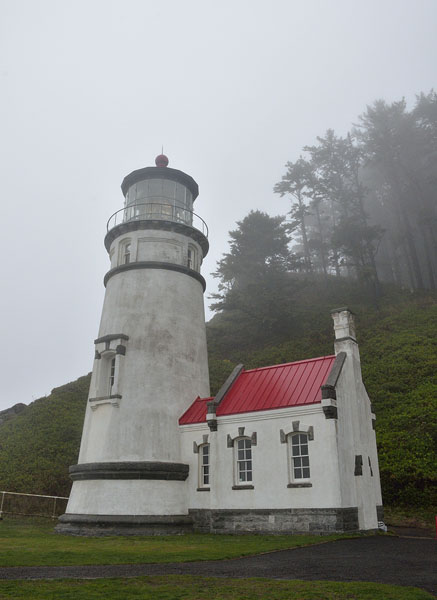
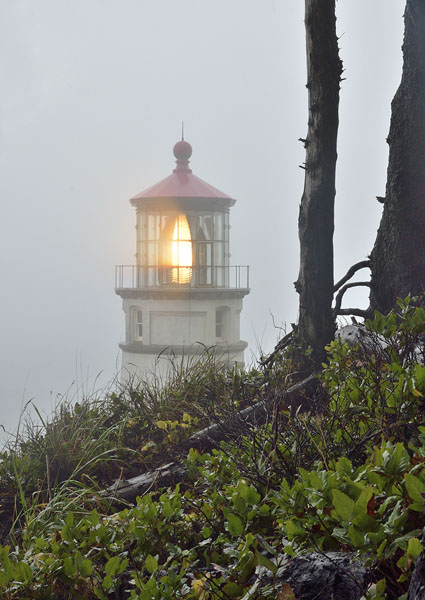 We were dressed pretty well for the foul weather, so we explored the little beach below the lighthouse, trying to imagine how the builders got the materials up the steep cliff to construct it.
We were dressed pretty well for the foul weather, so we explored the little beach below the lighthouse, trying to imagine how the builders got the materials up the steep cliff to construct it. 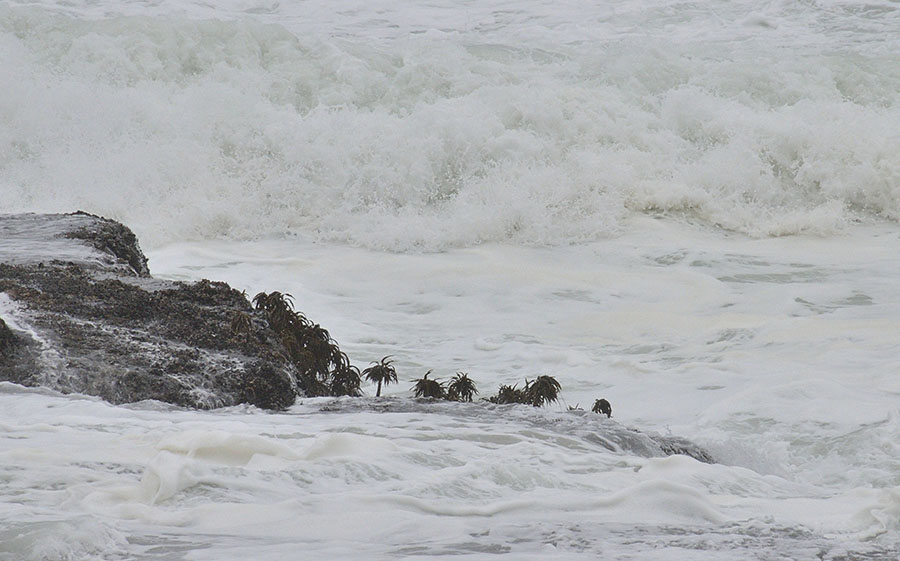 These little plants endured the most relentless assault from the sea, with tons of water repeatedly crashing on top of them, bending them but not breaking them off or tearing them loose. We finally found one on the beach that we could look at more closely, but it’s sturdy constitution defies the imagination.
These little plants endured the most relentless assault from the sea, with tons of water repeatedly crashing on top of them, bending them but not breaking them off or tearing them loose. We finally found one on the beach that we could look at more closely, but it’s sturdy constitution defies the imagination.